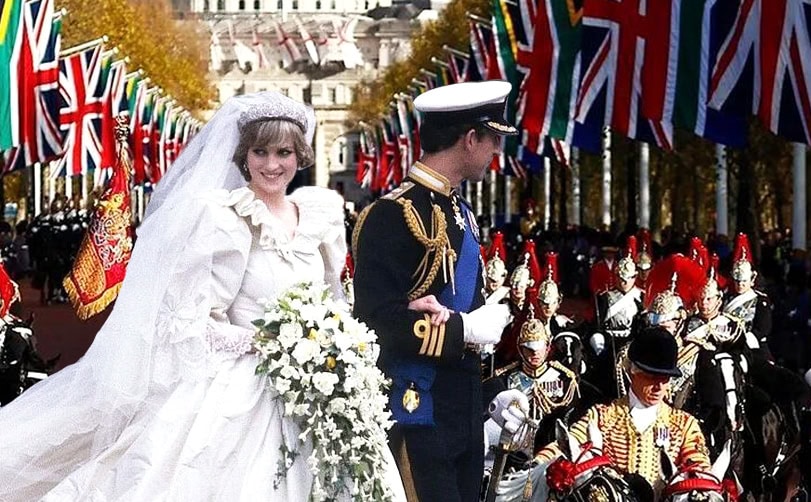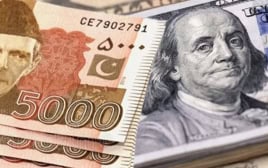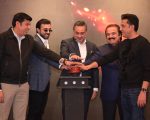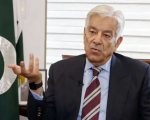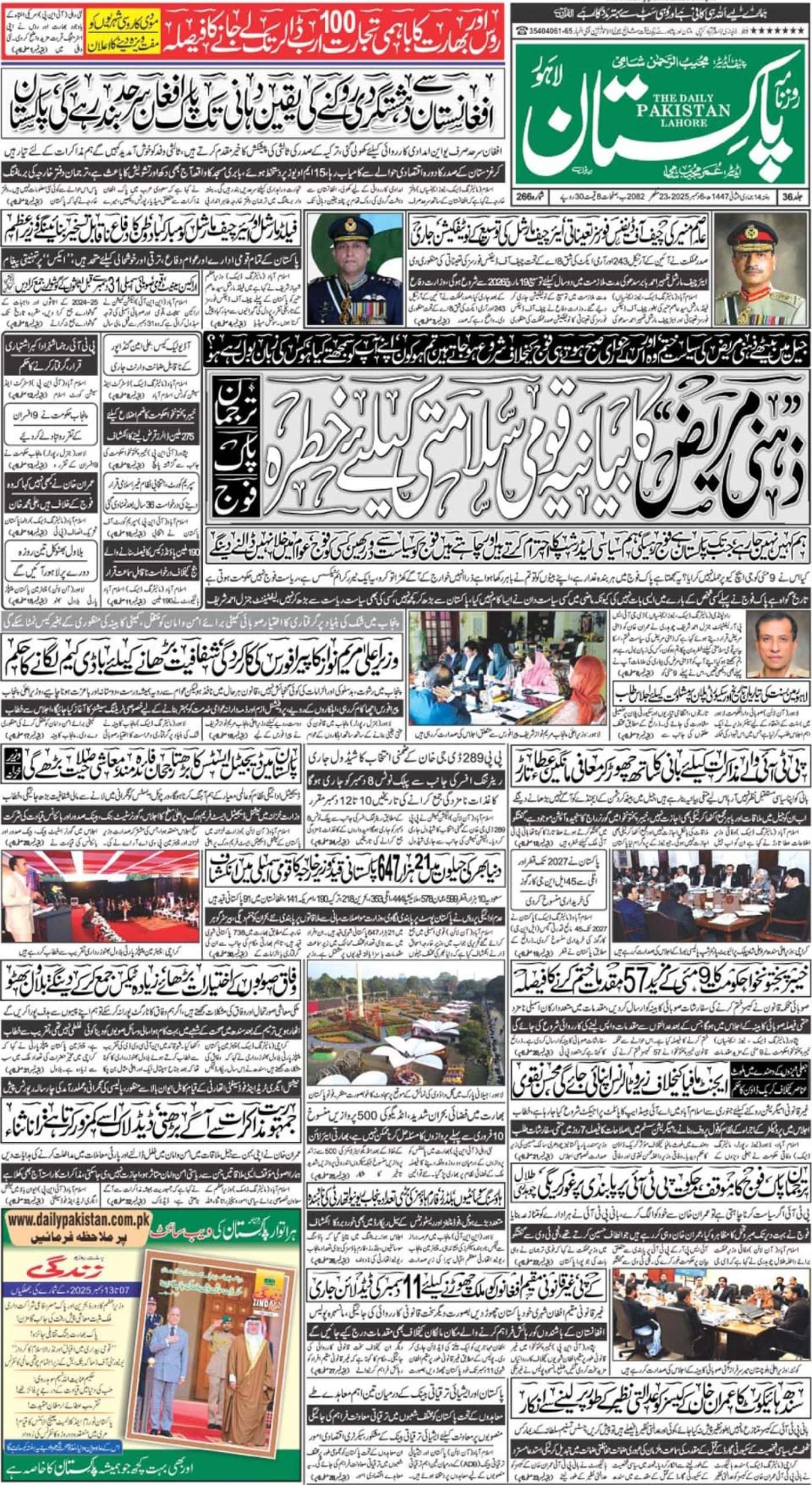At the beginning of 1997, Diana started a campaign against landmines. When she started her campaign Angola was the country worst hit by landmines. Over 20 million unexploded landmines littered the land. At the time 500,000 Angolans had been killed, and 200,000 maimed. These landmines had been planted by Western powers who had been vying for control of the country’s raw minerals and oil through a proxy civil war – the Soviets backing their opponents. Diana’s pictures with maimed Angolan children had an astounding effect catapulting the Red Cross collections to 1.2 million pounds whereas previous appeals on landmines had not garnered even 50,000 pounds.
But Diana had, somewhat unknowingly, stirred monsters. It was not just the Malthusian arms industry. Angola was at the center of an “arms-for-oil” scandal involving Cheney, Bush, the son of the President of France, and others. Some of the “most unethical undeclared investments” of the royal family were also in danger of being exposed. Texaco, Chevron, Halliburton, French businessmen, all were involved. In February 1997 Diana received an explicit death threat from a British minister. John Morgan writes: “During a phone call from Nicholas Soames, Britain’s Minister of the Armed Forces, Diana was told to drop her anti-landmines campaign. Soames went on to say: ‘You never know when an accident can happen.’ Although shaken, Diana told her friend Simone Simmons – who witnessed the call – that she was undeterred. ‘We must do something. We cannot allow the slaughter to continue.’” The threat by Soames was a very serious matter – he was an important serving minister.
The scandal known as Angolagate came to light only in 2002, five years after Diana’s death. But as early as 1997 Diana’s involvement threatened all these forces. Jon King and John Beveridge write in their book: “And the CIA, who also benefitted massively from the scandal’s proceeds, was not about to let this happen – certainly not at the hands of some meddlesome jet-set vamp like Diana. … If all it took to keep the cash and oil flowing was to help MI6 to terminate the threat, then, hey – that’s what allies are for, right?” On 23rd August 1993, a week before Diana died, a CIA contract agent met Jon King. King was investigating suspicious and dangerous goings on in British underground facilities. At the end of the meeting this contract agent told Jon King that he was going to leave him with “one last pearl.” He told Jon: “This information came into my possession a short while ago, and it concerns a plot to eliminate one of the most prominent figures on the world stage… I do not know when or where precisely the hit will take place. I do not know the precise schedule. But as far as I have been made aware it has been planned for a good many months and it will take place within days from now…. very soon … I can tell you Jon, this one will be bigger than Kennedy.” Jon King thought of Clinton or Tony Blair but Diana’s name did not appear on his “radar”. A week later when the fatal crash took place he immediately realized that it was Diana that the CIA agent was referring to.
Diana had begun the anti-landmines campaign on the urging of Hillary Clinton. In view of Diana’s enormous impact, Bill Clinton was persuaded by her to agree to signing an international agreement banning landmines. The agreement was due to be signed in Oslo on 18th September, 1997. Clinton was threatened with scandals about his sex life, and with impeachment, in case he went ahead. He was also told that Diana would no longer be on the scene by that time. This information was provided to Jon King and John Beveridge by their “sources” in the US. Diana’s ability to influence world opinion as well as the president of the US disturbed the Malthusian Anglo-American elite. Diana had the ability to outmaneuver those who had been influencing global opinion through manipulated media. The world opinion stood by her. As Jon King and John Beveridge wrote: “After all, if Diana was capable of so affecting public opinion with regard to landmines, then what next? Gulf War Syndrome? Palestine? Iraq? For a moment at least, the entire corporate edifice was aquiver.” Therefore, Diana had to be eliminated before Clinton signed the treaty banning landmines.
Another development that took place in July 1997 was her sudden and unforeseen involvement with Dodi Al Fayed, the son of the then owner of the Harrods store. The two fell in love very quickly and planned to get married. On the evening of August 30, 1997 Dodi collected an engagement ring as he was going to propose to her formally. There were rumors that Diana was already pregnant. This speedy and utterly unexpected development deeply disturbed the British Establishment. Noel Botham points out: “To the horrified members of the British Establishment who saw the growing possibility of marriage to the Egyptian playboy, prompting Diana’s conversion to Islam, and the birth of a Muslim half-brother or sister for the future King William, the unfolding scenario was totally unacceptable…” The concerns affected other powers as well. Washington and Israel also would not stomach such a possibility. Botham adds “It was widely believed the union of Diana and Dodi signaled a change in world opinion in favor of Arabs and consequently against Israeli interests.”
The prospect of an anti-landmines treaty and of a Diana-Dodi union, thus brought an urgency to the elimination of Diana. The CIA agent who had told Jon King on August 23 that the hit would take place “within days from now” was well informed. When Dodi and Diana arrived in Paris to collect the engagement ring and stay overnight, the elimination plan was in place. The paparazzi, many of whom are known to be employed by various agencies were already present there. There was a police escort present when the plane landed at the Le Bourget airport. But when the cars hit the A1 auto route the police escort seems to have melted away. Unexpectedly Henri Paul, head of the security at Ritz hotel in Paris, was also at the airport. He was on leave, but hearing of the arrival of Diana and Dodi, he cancelled his leave and returned to Paris. He was to play a mysterious role that evening and also died in the accident. The paparazzi were more aggressive than usual on that day.
On way to the Ritz hotel, which was also owned by the Fayed family, an incident adumbrated what was to come later. According to press report a black Peugeot 205 sedan deliberately swerved in front of the Mercedes S 600 in which Diana and Dodi were traveling, forcing the Mercedes to brake. According to Jon King and John Beveridge: “At which point a motorbike pulled alongside and its pillion passenger, camera in hand, fired off a volley of high powered flashes through the side window, temporarily blinding both driver and passenger alike.” The temporary blinding of the driver through a high-powered flashlight was to play a crucial role in the car crash later that night. When the couple arrived at the Ritz a large number of Paparazzi had assembled. The CCTV footage revealed certain unidentified persons, who were neither tourists nor paparazzi, who appeared on the scene around 4:00 PM and stayed there all evening. Ex-Scotland Yard detective chief superintended John McNamara later identified them as British and foreign intelligence agents. McNamara investigated the deaths on behalf of Ritz and Mohammad Al Fayed, father of Dodi.
Ex MI6 agent Richard Tomlinson has pointed out that on the weekend when Diana and Dodi died, an unusually high number of important MI6 personnel were present in Paris. What were they doing there? He has particularly mentioned Nicholas Langman and Richard Spearman. Spearman was previously the personal secretary of the chief of MI6 and was thus privy to the most secret MI6 operations. Further, the wireless operator in the British Embassy revealed that just before midnight two well-spoken men burst through the door of the communications room and ordered him to leave immediately and not to return until told to do so. The operator would not have relinquished the charge of the room to strangers but he recognized one of the men as Sir (now Lord) Robert Fellowes, the secretary of the Queen, and therefore left. Even though Fellowes denies being in Paris that night the wireless operator had no reason to lie and endanger his life (while Fellowes had every reason to lie). The operator told someone: “It was that bastard Fellowes. He turfed me out of my own office. He was in Paris the night Diana died.” The record of the first two phone calls around that midnight is missing from the embassy logs.
In his extremely important book “How They Murdered Princess Diana – The Shocking Evidence”, John Morgan has established that five days before the Diana assassination, the MI6 chief at Paris was changed. The new chief, Sherard Cowper-Coles, replaced Eugene Curley. For some reason the MI6 tried to hide this from the inquest. Why? It is possible that Eugene Curley was unwilling to carry out the assassination and so had to be replaced. Morgan has dissected the relevant evidence and destroyed the false statements made by MI6 personnel to the inquest that Cowper-Coles assumed charged on August 31, 1997, on the very day that Diana died! There is little doubt that high level MI6 and other personnel were present on the fatal weekend in Paris. And they were not there for a Parisian holiday but on a secret mission.
Diana and Dodi were supposed to dine at the Ritz restaurant. But since their clothes had been sent to Dodi’s apartment, they had to go there first to change. When they arrived at Dodi’s apartment the paparazzi were there and were quite aggressive – so aggressive that Dodi’s security could not handle them. This aggression upset the Princess as well as Dodi. In view of the attitude of the paparazzi they cancelled their program of eating at the restaurant and decided to eat in their hotel suite. As the couple got off the car at the Ritz about fifty paparazzi were present. Jon King and John Beveridge point out; “For some reason the tension was even more aggressive than usual. Insults flew. Scuffles broke out. Shouts went up as bodies jostled for position.” It appears that there was a reason for this aggression – to create a pretext for what Henri Paul was to do later that night.
After the Princess and Dodi had spent time at their Ritz suite and had eaten and taken a drink, they were happy and relaxed. In view of the attitude of the paparazzi the best thing was to stay overnight at the Ritz which offered the best security. However, Henri Paul, who had disappeared for three hours from 7-10 PM that evening, persuaded Dodi to go to the flat. Further he proposed to call a different limousine and personally drive them to their flat. He lied to the two personal guards of Dodi that the new plan had been approved by London (i.e. Dodi’s father). He also insisted that he did not require any security and that he will drive them alone. However, the two bodyguards insisted on accompanying them. VIP protocols requires seven security personnel to accompany a VIP. After much haggling it was agreed that one security guard, Trevor Rees-Jones would be in the car with the Princess and Dodi and Henri Paul as driver whereas the other, Kez Wingfield, would be in a follow up car. This violation of the VIP protocols was to cost not just the Princess and Dodi, but also Henri Paul his life. The odd behavior of Henri Paul can only be understood if one realizes that he was working for MI6 who used him to drive the car into the tunnel but did not let him in on the entire plan.
The alternate limousine was an S 280 Mercedes that had, some weeks earlier, been stolen at gunpoint. When it was found its EMS (Electronic Management System), a microchip that controls it steering, brakes, etc. had been removed. The EMS has very little resale value so that its theft was done to, most probably, insert a replacement later that enabled someone from outside to control the car if and when needed. To take over the control of a vehicle externally is a method of assassination in which the steering is controlled and brakes failed externally, usually from a rear vehicle – this method is known as Boston brakes. When the Mercedes S280 departed from the rear of the Ritz there were already unidentified faces at the rear. Further a small vehicle started tailing the Mercedes.
All those who knew Diana well, including her Private Secretary Michael Gibbins, Hasnat Khan, her body guard Ken Wharfe, Dickie Arbiter, her press secretary, and others, stated that Diana was very particular about fastening her seat belt. In view of her apprehensions that she would be killed in a car accident this concern becomes even more obvious. Investigator David Price found that Diana’s seat belt was jammed. According to the Paget Report: “David Price’s investigation of the seat belts showed that they were in a good operational condition with the exception of the rear right seat belt, which was found to be jammed in the retracted position because part of the internal mechanism had become displaced.” Did someone tamper with the rear right seat belt of the Mercedes S 280? Nobody investigated as to why or how or when the seat belt malfunction occurred. Only Diana’s seat belt was jammed and all others were in working condition! This information was withheld from the jury! Why?
Surprisingly, Henri Paul did not take the safest, most well-lit, policed and shortest route to the apartment, which was via Champs Elysees. This decision is again questionable. He, instead, took a much longer route that took him into the rather dark tunnel where the fatal crash occurred. Richard Tomlinson has expressed the view that Henri Paul was carrying out instructions except that “the final outcome was not the finale that had been promised to Henri Paul. He too was to prove a gullible victim of Diana’s killers.” Chief Inspector Mules said that he had recovered 12,565 francs in cash (1,265 pounds) from the dead body of Henri Paul. So, in Tomlinson’s view: “If one accepts the premise that the wad of cash in Paul’s pocket, and the recent huge payments into his secret bank accounts, were to pay for cooperation in an arranged accident, then what happened next was all part of the plan dictated by his intelligence pay masters.” Henri Paul was operating seventeen different accounts in three banks and five credit cards. His income was far beyond the salary he was receiving from the Ritz. The police never investigated his huge income! Why?
In order to temporarily blind, stun and disorient the driver the British intelligence employs powerful lights that are suddenly shone into the driver’s face. These lights are far more powerful than the camera flashlights. An SAS officer told Noel Botham “The effect on a driver, at night particularly, is catastrophic. He is totally blinded and mentally stunned. He would be incapable of steering a car.” According to Tomlinson, when he was in MI6, an accident in a tunnel using such blinding lights was discussed as one of the three possible methods to assassinate Milosevic, the Serbian leader. A small white Fiat Uno was apparently waiting at the tunnel entrance and as soon as the S280 entered the tunnel this Uno caught up with it and began nudging it in a corner. This allowed a mysterious motorbike with its two riders to overtake the S280, get right in front, and then flash a blinding light into the eyes of the driver causing him to crash. It is also possible that the control of the S280 was taken over as there was another Mercedes tailing the Uno and one witness on a motorbike had heard a small explosion from the S280 just before it entered the tunnel. Such an explosion is caused in the Boston brakes method and causes brake failure. Eyewitnesses reported that as soon as the S280 crashed one of the riders of the motorbike got off, walked to the car and after looking into it made a military sign to his colleague indicating that the mission had been accomplished.
From his hotel window, a London lawyer Gary Hunter, who had heard the sound of the crash, saw a small car tailed by a white Mercedes exiting the tunnel at 60-70 mph. “My own feeling is that these people were in a hurry not to be there. . . It was obvious they were running away from something. It looked quite sinister.” The side mirror of the crashed S280 had white paint which must have come from the Uno that grazed it. Further, in the right lane, at the entrance of the tunnel red and white debris came from a Fiat Uno and was part of the rear light of a vehicle built in Italy. The Uno and the motorbike riders and the white Mercedes all had disappeared and the French police did not pursue the matter. The motorbike riders, in particular, were never identified. And Gary Hunter died at age 47 in 2004!
To be part of an accident or to witness an accident and not report it to the police is a crime in France. But the French officials seemed very unconcerned about this aspect. When a member of John McNamara’s team traced the Uno, and informed the French police, he was threatened with arrest for interfering in the investigation! It had belonged to a boastful and extremely rich French paparazzo named James Andanson who worked for both MI6 and French intelligence. Commander Mules of the French Criminal Brigade took a further six weeks to contact Andanson and then lied that the car was tireless and without a battery. John McNamara vigorously refuted this stating that the car, which had been in Andanson’s possession, was with a dealer and was on sale, and had been fitted with a new rear tail!
Andanson practically lay low for a couple of years, something odd for a paparazzo. But he had a big mouth and he had been talking to people about his presence in the tunnel at the time of the crash and of having photographed Diana at that time. He had also told some people that the photographs had been hidden at some location and that he intended to publish a book including the photos, a book that he expected to be a sensation. On May 4, 2000, his burnt and charred body was found inside his car, in a remote area, hundreds of miles from his residence. The fireman who first saw his body clearly remembered two bullet holes in Andanson’s head! Despite this the police ruled the death a suicide! Clearly a cover up was going on. There were serious oddities in this death which one cannot cover comprehensively in an article. These have been pointed out by John Morgan, Noel Botham and by Jon King and John Beveridge, among others.
Within a week of the public declaration of his death the offices of the photographic agency, SIPA, for which he worked, were raided by masked gunmen who spent three hours in the office and went straight to the floor where photographs of celebrities were archived. SIPA offices remained open 24/7 but the police did not respond to calls for help in the three hours even though one of the guards had been shot in the foot. The burglars got away with the photographs and some laptops and computer drives containing the pictures. The burglars had dismantled the security cameras. These burglars were never traced by the police. It is believed that they were working for the intelligence agencies.
When the crash took place Henri Paul and Dodi died instantly. The face of Trevor Rees Jones was smashed but he was not dead. The first person on the scene was a motorbike rider named Eric Petel who, after recognizing Diana in the crashed vehicle went straight to the nearby police station to inform them and ask them to call for help. There were no paparazzi on the scene when Petel was there. According to the timeline drawn by John Morgan the crash took place at 12:23 and the first paparazzi arrived at the scene at 12:24. It appears that Petel was at the scene just after 12:23 and left within the minute, before the paparazzi arrived. He was not carrying any cell phone as he did not like cell phones. The Princess was badly hurt, but, according to a doctor, who was passing by, and first arrived at the scene, she was not critical. The opinion was endorsed by a doctor of the French emergency service SAMU who replaced the first doctor. Further, as pointed out by Morgan, at least seven witnesses who were on the scene early, stated that Diana was conscious in the first few minutes after the crash. Almost all of them heard her mutter the words “My God”.
Since Diana had to be killed, steps in this direction were already ensured. There was a strategy of delaying the arrival of the ambulance, and of delaying her arrival at the hospital, among other things. At some point a decision was taken to transport Diana to the Pitie Salpetriere hospital which was, as noted by the very precise John Morgan, 5.7 km from the crash scene. There were excellent hospitals nearby which were left out. Why? The reasons given by the doctors for choosing this hospital over others, particularly Val de Grace, which is 4.6 km from the crash scene, were mostly false. In fact, most high profile personalities, are usually taken to Val de Grace. It has been noted by John Morgan that “The ambulance left Necker Hospital base at 12:28 am and arrived at the crash scene at 12:40 am. It took 12 minutes to travel 2.3 km – Diana’s ambulance traveled to the scene at around 111/2 kph.” This is astonishing.
Before the police and SAMU arrived, some paparazzi who had reached the scene and began taking pictures instead of calling for help. Seeing this, Clifford Gooroovado, a taxi driver who had rushed to the scene, shouted at the paparazzi “is that all you can do instead of calling for help?” The paparazzi even tried to delay medical help to Diana and her guard! According to eyewitnesses they resisted and blocked help for minutes, when every minute, even seconds, mattered. Were some of them working for agencies? Instead of helping the injured, they were fighting, apparently for pictures, they were also, in the process, obstructing help deliberately!
Jon King and John Beveridge point out: “And further, why was Diana treated by doctors and paramedics for more than 90 minutes, both at the crash site and in the back of the ambulance en route to the hospital?” Diana had internal wounds and her BP fell dangerously low causing a heart attack. The authors ask: “Why was she taken to Pitie Salpetriere hospital – the furthest from the scene – at snail’s pace, when at least two other, closer hospitals could have dealt equally well with the emergency?” And why was the ambulance going at “snail’s pace”? The authors ask further: “Surely if her condition was so delicate that the ambulance was forced to travel at a suspiciously slow pace then prudence would dictate she be taken to the nearest hospital for the swiftest possible medical attention. In this regard, one of Paris’s most noted, and indeed, best-equipped hospitals, Hotel Diu is less than two miles from the seat of the crash. The ambulance drove straight past this hospital on its way to Pitie Salpetriere.” Do we know of any incidents in which the ambulance carrying a critical passenger drove to the furthest hospital at snail’s pace? Most probably none.
John Morgan has pointed out numerous lies in the testimonies of those related to SAMU and the Fire Brigade who were dealing with Diana. Further, the role of the SAMU and Fire Brigade doctors is highly suspect. For instance, Jean-Marc Martino of SAMU misrepresented the situation to his base. He first stated that Diana only had a fractured arm. He later on introduced cranial injury when there was none and did not mention the wound in the thorax! Why? In fact, Diana scored 14 out of 15 on the Glasgow scale that showed that she had no brain injury. Diana was allowed to remain in the car in her cramped position, when she could easily have been taken out, for 37 minutes! Why?
It was this deliberate policy of the doctors on the scene that caused her to lose her pulse. She did not have a cardiac arrest as usually propagated. It was because of her cramped position and injuries that blood circulation was being impeded. Dr. Tom Treasure, a cardio-thoracic surgeon, told the inquest that Diana’s heart would never have actually stopped beating. She had minimal or zero pulse because of posture. “What she had . . . is called electromechanical dissociation – [meaning] that there is so little blood in circulation at that point that the heart could not fill. The heart was beating – electrical activity, normal beat, normal rhythm – but because it was completely empty, it had nothing to push into the circulation, she was pulse less. Having then sometime later, having got this difficult position in the car, laid flat, her own reflexes came into action, some fluid given, the heart has volume again, the pulse returns. ” A cardio-thoracic surgeon Alain Pavie told the inquest: “When your legs are up the blood goes to the heart and the brain. When you lay the legs down, part of the volume of blood is perfusing the legs . . . [Diana] was easily treated and easily stabilized.”
Further there are inexplicable oddities in the case. Two ambulances belonging to the Fire Brigade arrived at the scene with no doctors on board! There is always a doctor with the ambulance. It was later that the doctors arrived. These two doctors who arrived late on the scene were never questioned, either by the police or the inquest! Why? Some important individuals were never questioned. In particular, the mysterious role of Dr. Arnaud Derossi, working as base despatcher for SAMU, has been underplayed. He arrived at 12:50 and he was one who directed Dr. Lejay, at 1:20, half an hour later, that Diana be taken to Pitie Slapetriere. Morgan points out: “Both Lienhart and Derossi lied under oath at the inquest about Derossi’s role. Why?”

